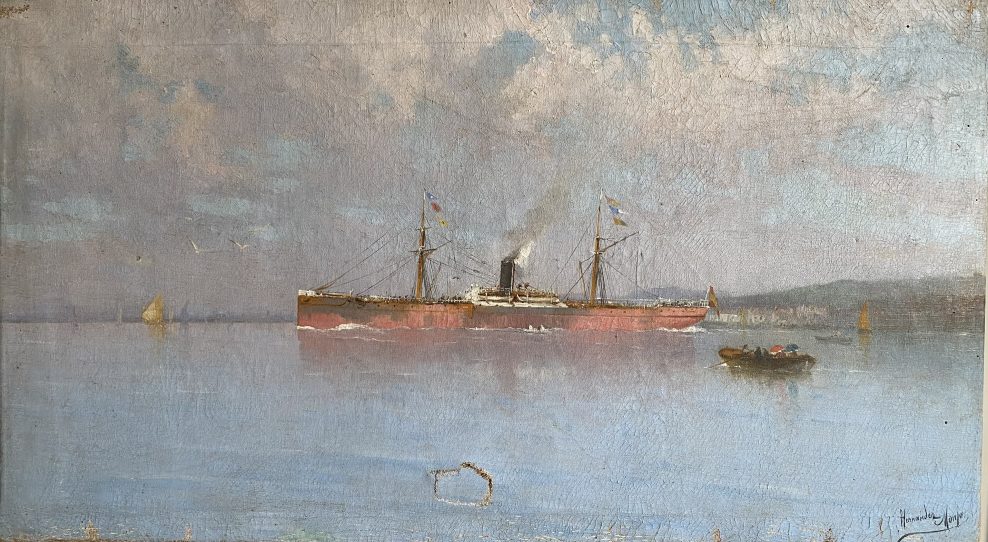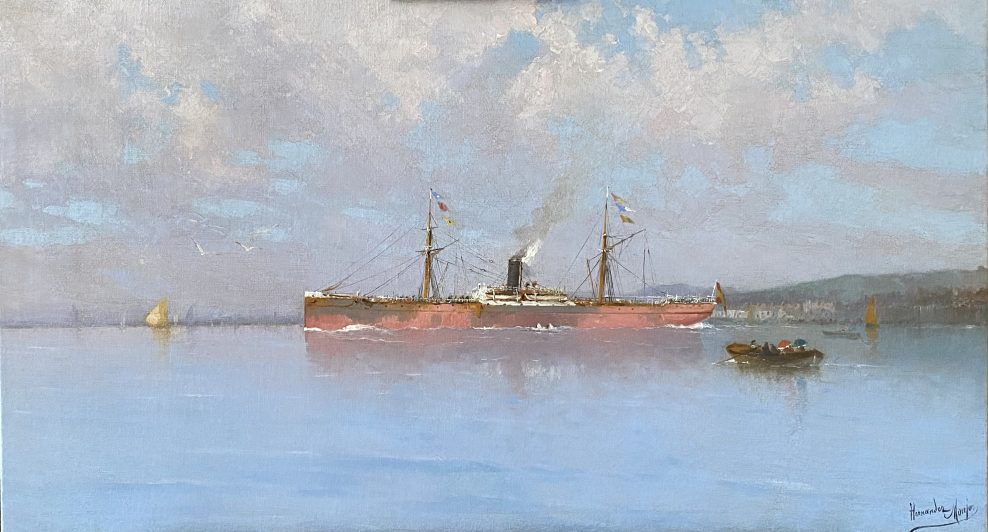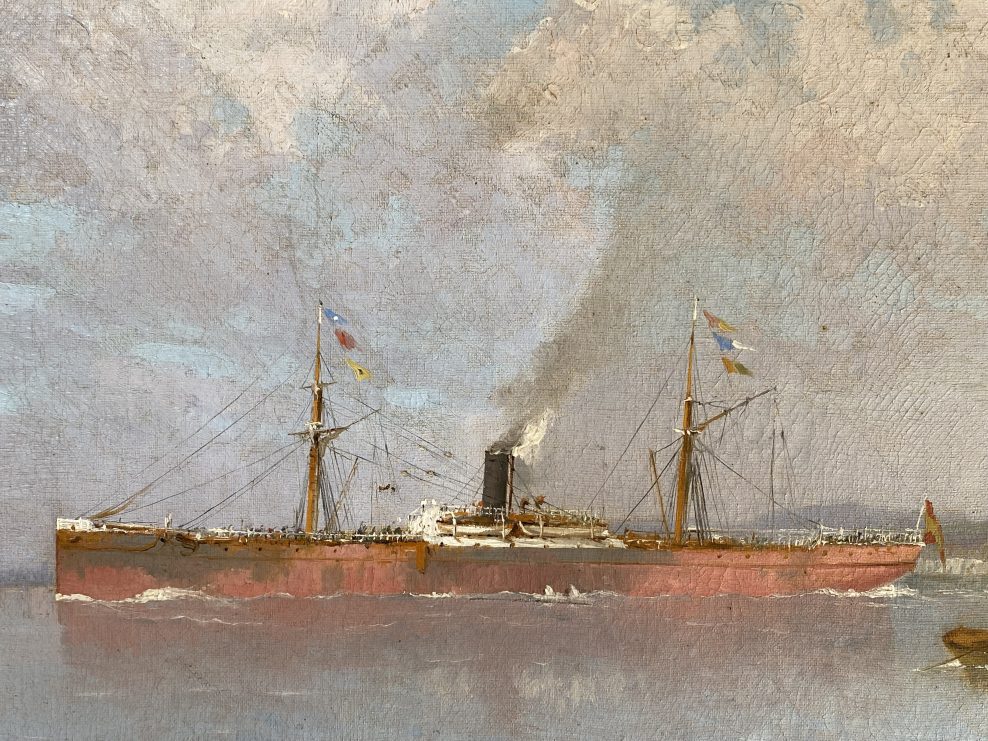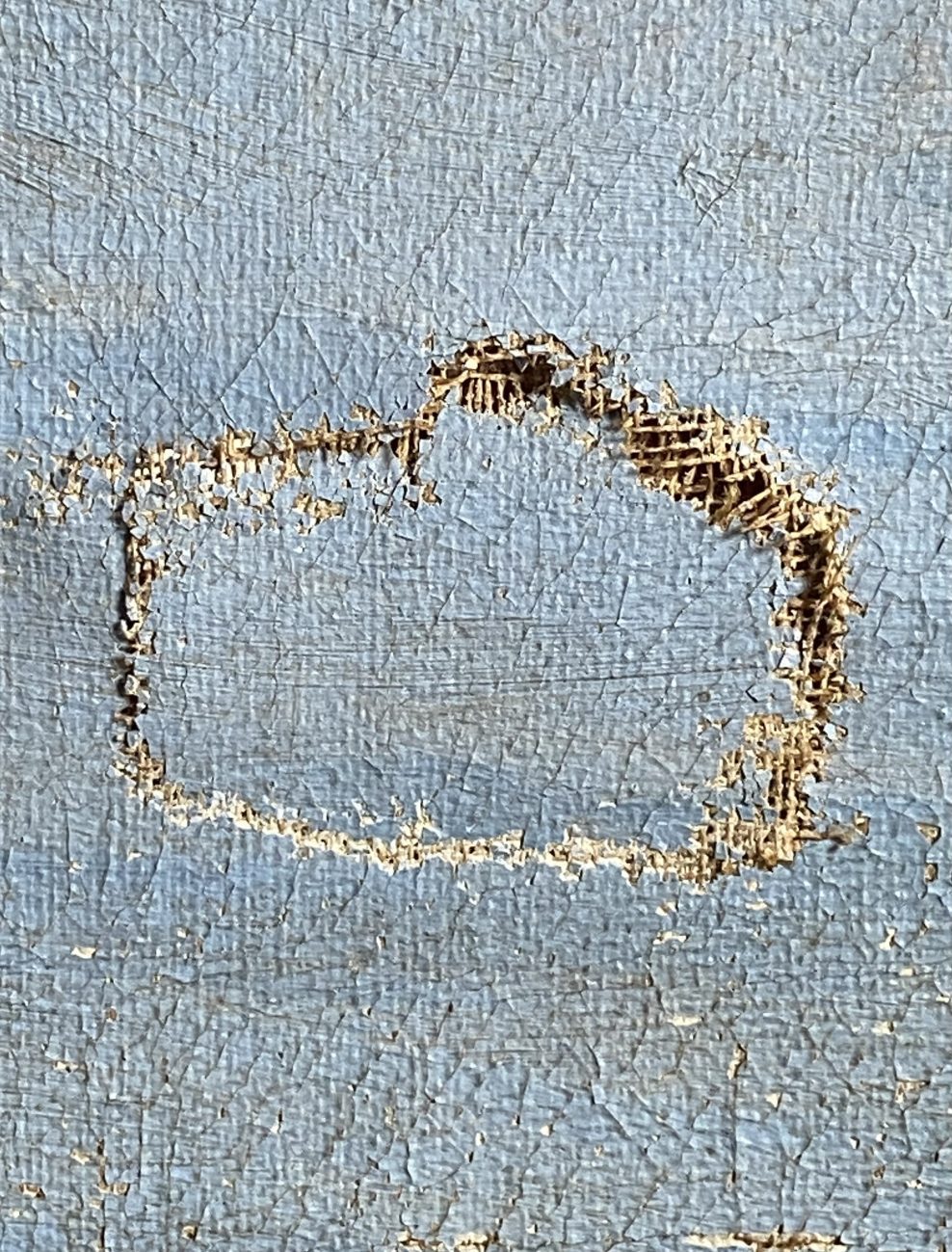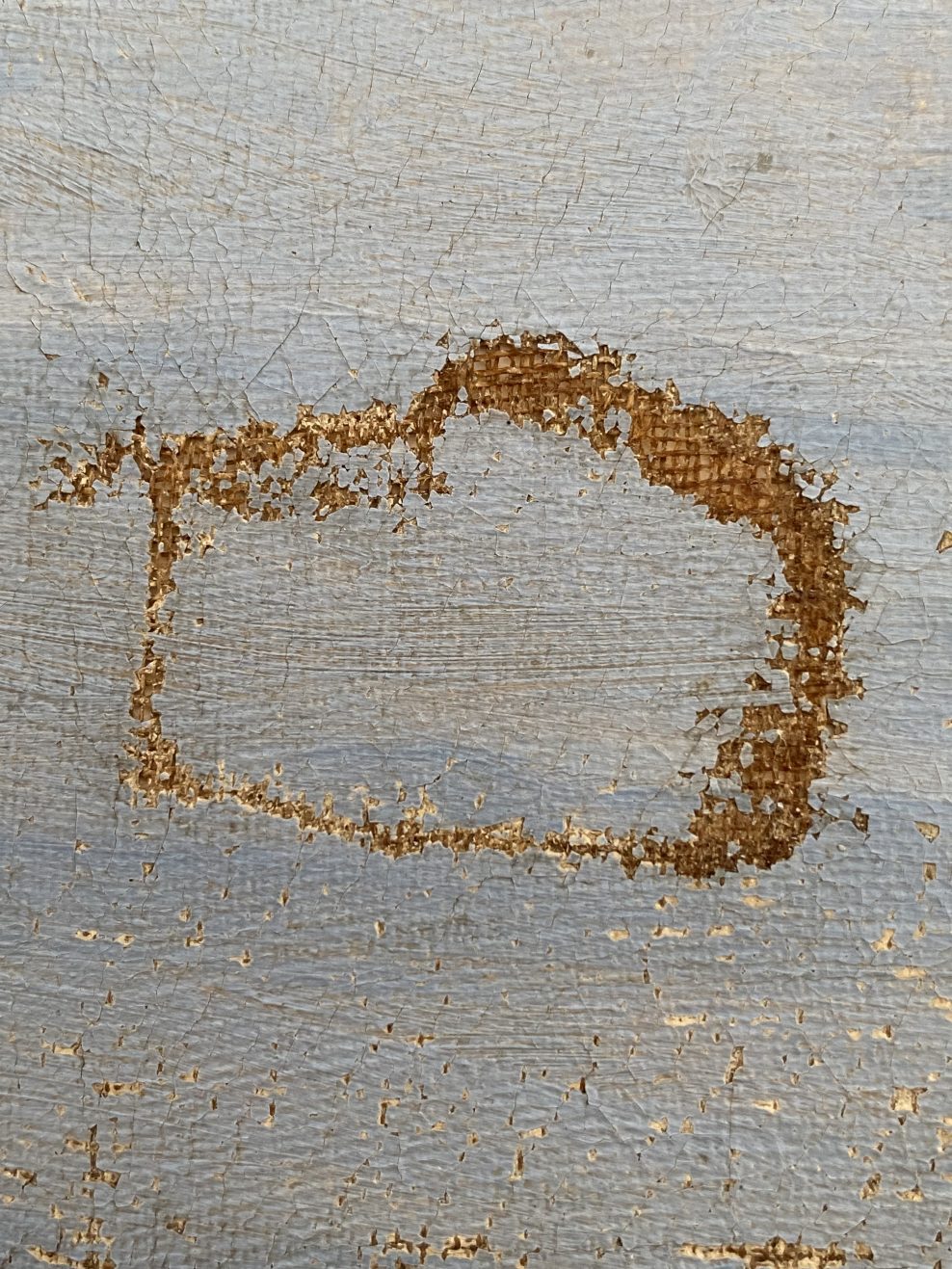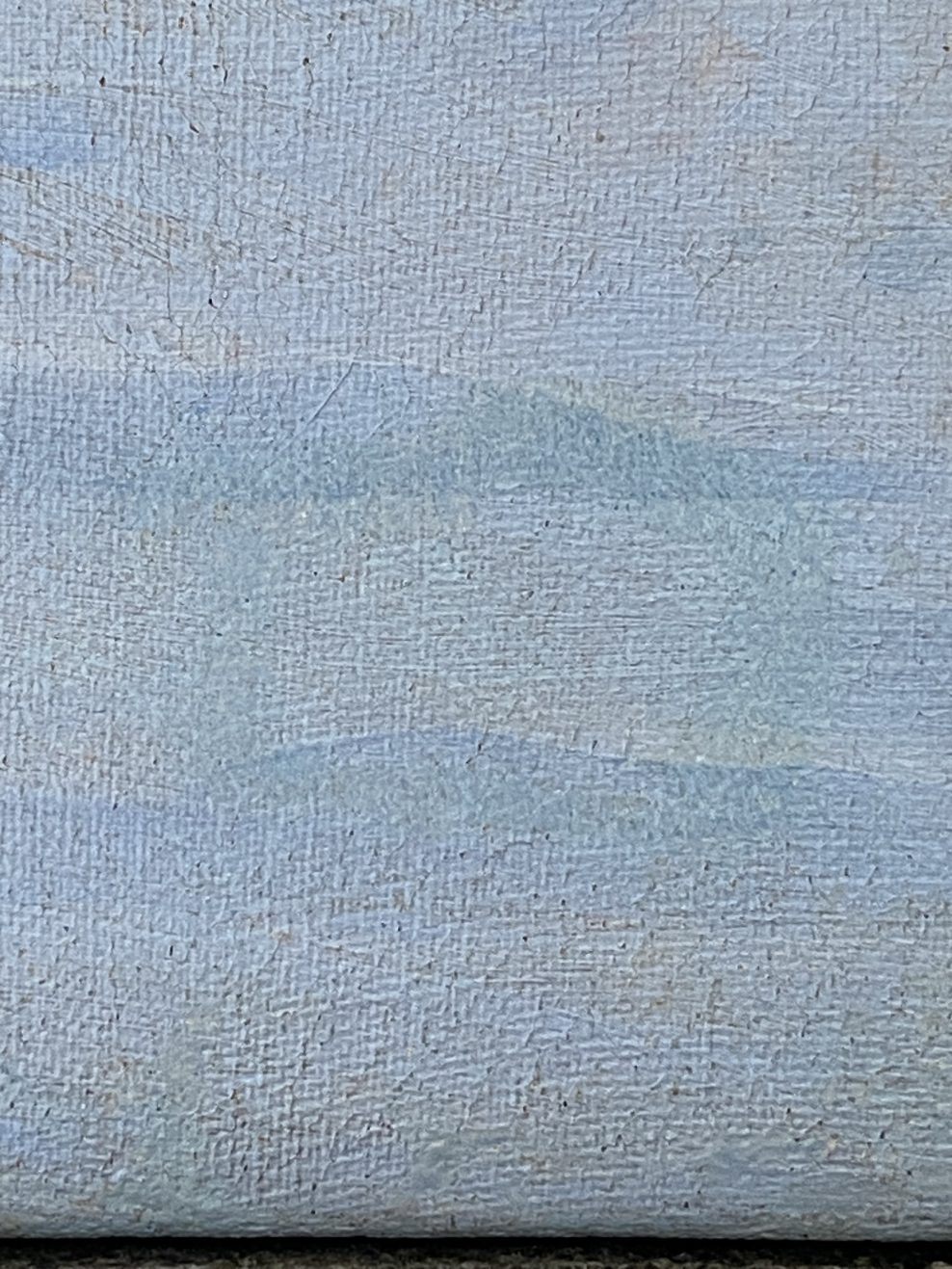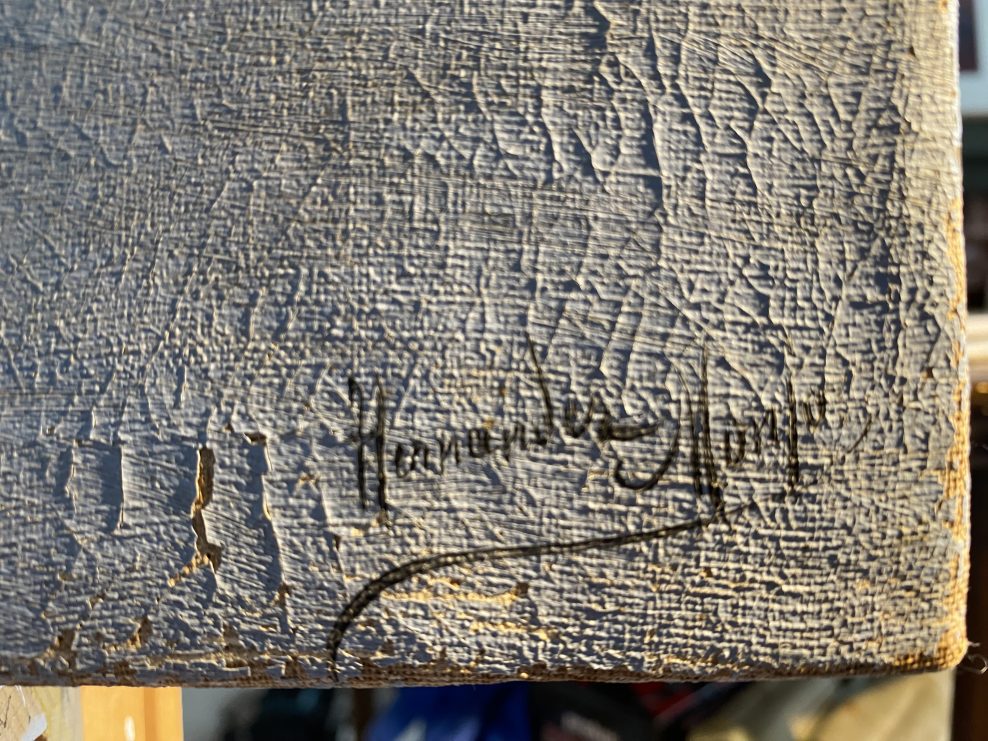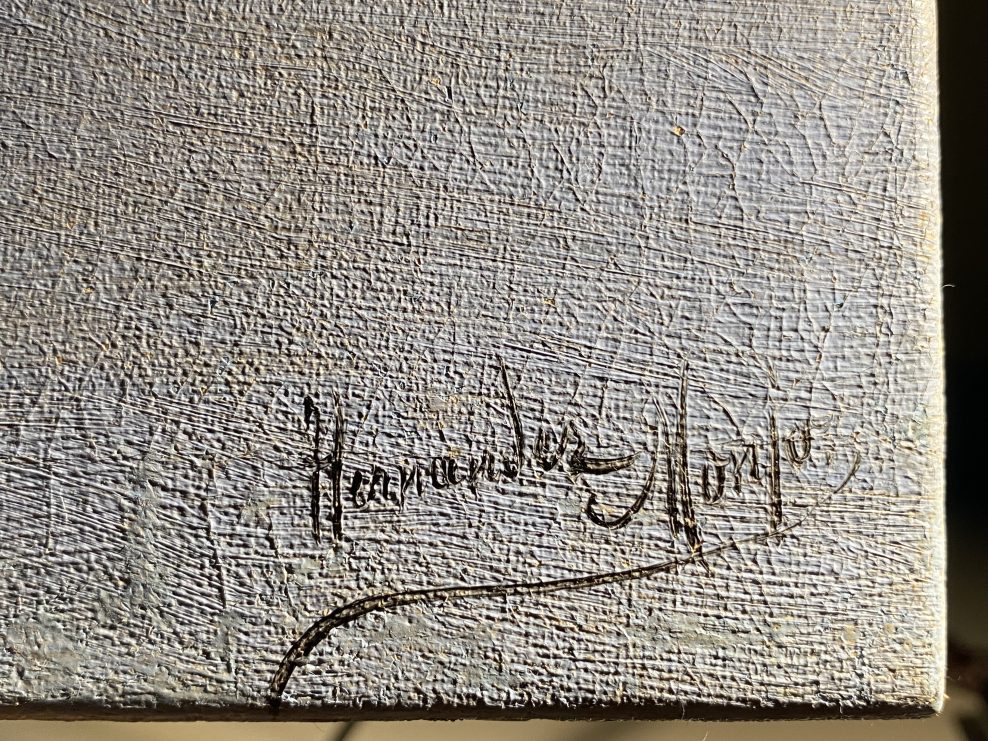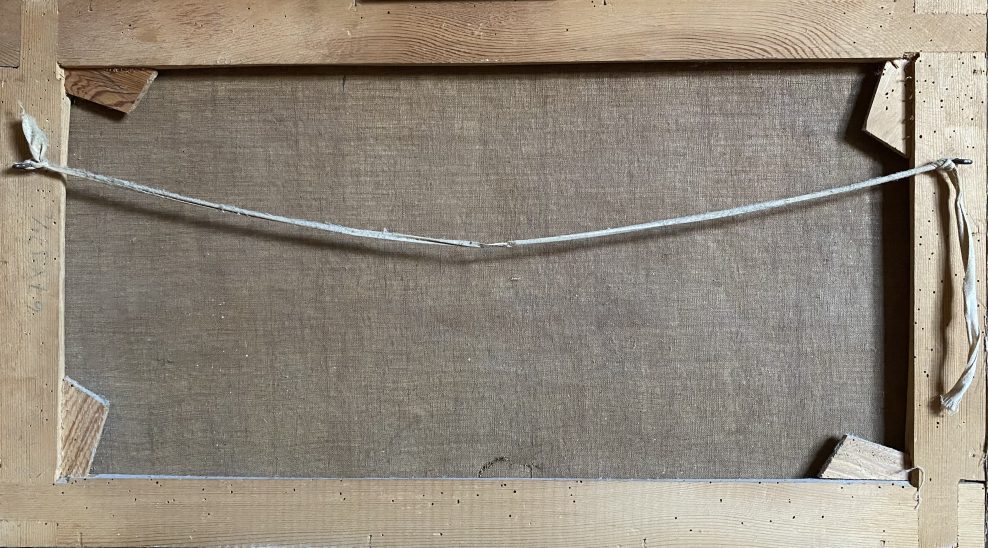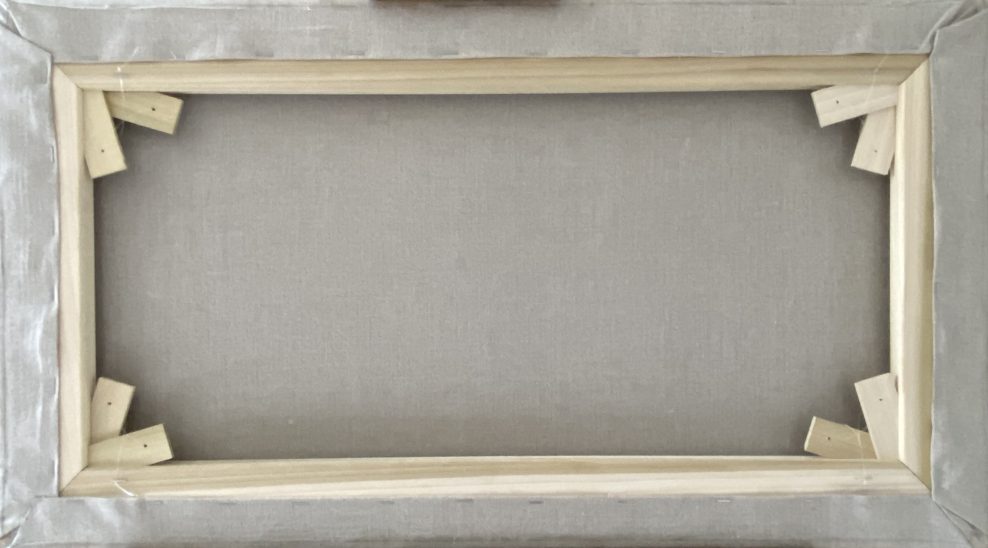Projects
Painting of a Ship at Sea
By Hernandez Monjo (1862-1937)
Early 20th century
Oil on canvas
Condition.
The oil paint was applied onto a fine open weave canvas which was so severely degraded and fragile that a tear had occurred towards the bottom. The surface was covered in a network of age cracks and some of the cracking paint was lifting leading to paint loss in places.
There was a layer of dirt on the painting as well as a thin slightly discoloured varnish.
The stretcher was riddled with woodworm which had eaten away at the timber to severely compromise the strength of the support.
Conservation treatment.
The paint layer was consolidated and the surface dirt and varnish residue were removed. Distortions around the tear were moisture treated to flatten the area. Broken threads were realigned and missing threads were cut and bonded into position to re-create the warp and weft threads as far as possible.
The painting was taken off the worm eaten stretcher, BEVA lined onto a linen canvas and re-stretched onto a new tulipwood stretcher using stainless steel staples.
A conservation grade varnish was applied and paint losses were filled, textured and retouched to reintegrate as far as possible.
Lastly, the painting was framed using UV filtering low reflective glass. An inert transparent film was fixed to the back to prevent the build up of dust and dirt as well as minimise ongoing degradation due to fluctuations in temperature and relative humidity.
